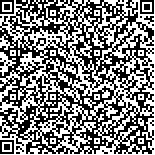Archive > Volume 39 Issue 12 > 2013,39(12):1626-1634. DOI:10.7519/j.issn.1000-0526.2013.12.011 Prev Next
Study on Quality Control of Radiosonde Temperature
- Article
- Figures
- Metrics
- Preview PDF
- Reference
- Related
- Cited by
- Materials
Abstract:
Quality control (QC) of radiosonde data is the important guarantee for radiosonde data assimilation in numerical model. As the numerical model resolution is getting higher and higher, the drift distance with height of radiosonde balloon needs to be considered in data assimilation. In this paper, temperature characteristics of radiosonde observation from 119 radiosonde stations are analyzed by comparing with T639 model analysis field (0.28125°×0.28125°) and temperature profile of the COSMIC radio occultation. Meanwhile, a bi weight mean quality control method for radiosonde temperature is studied combining the drift information and the error sources of radiosonde temperature. The results show that the drift distance of radiosonde balloon increases with height. The maximum drift rate appears in the range of 300-100 hPa. The bi weight mean quality control method ensures the data quality after the quality control. The temperature error sources and drift information affect the results of quality control. The amount of outliers at high levels above 300 hPa is reduced when the error source is considered. The outliers of the maximum drift rate levels are reduced when the drift information is considered. The elevation differences between the model terrain and radiosonde sites have impacts on the background consistent check. When the height of radiosonde sites is lower than model terrain, some outliers at low levels will appear. And there is a positive correlation between outliers and elevation difference, the larger elevation difference is, the more outliers there are.
Keywords:
Project Supported:
Clc Number:


Mobile website









